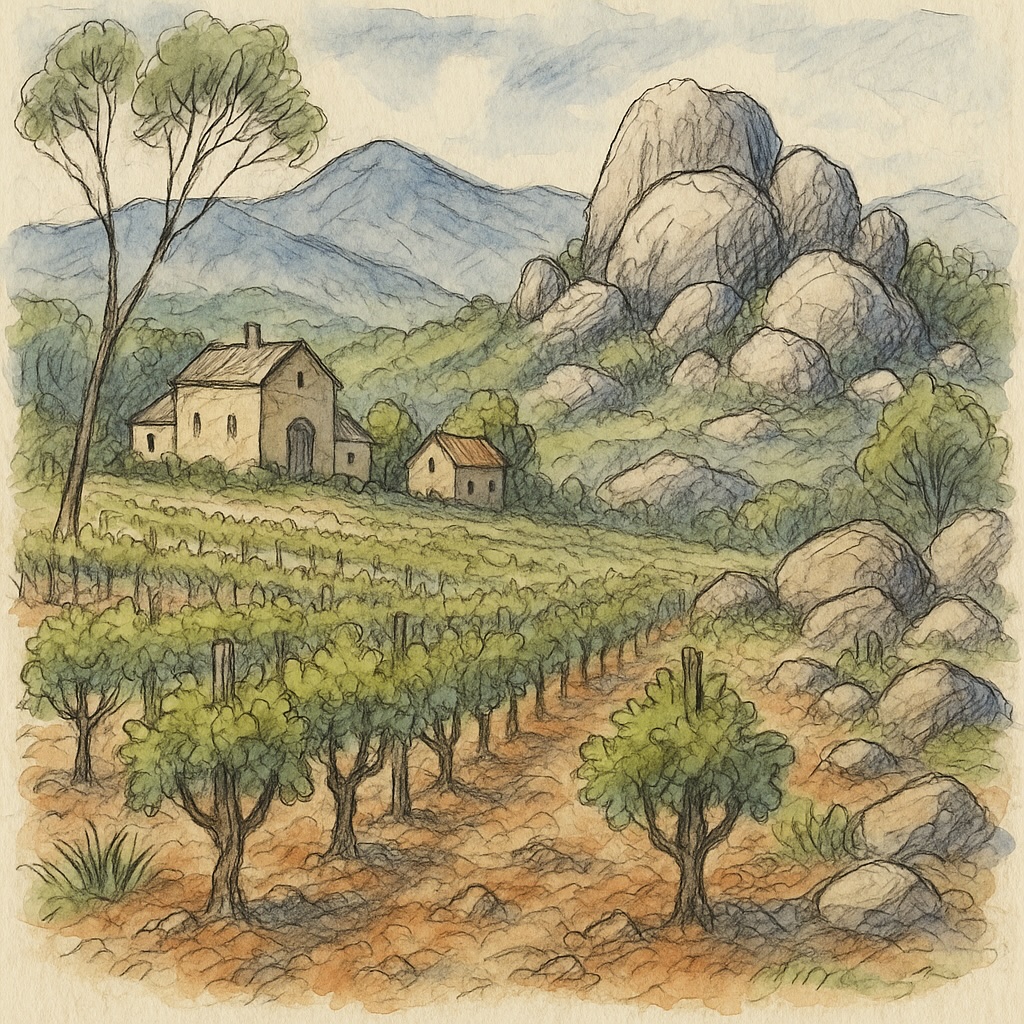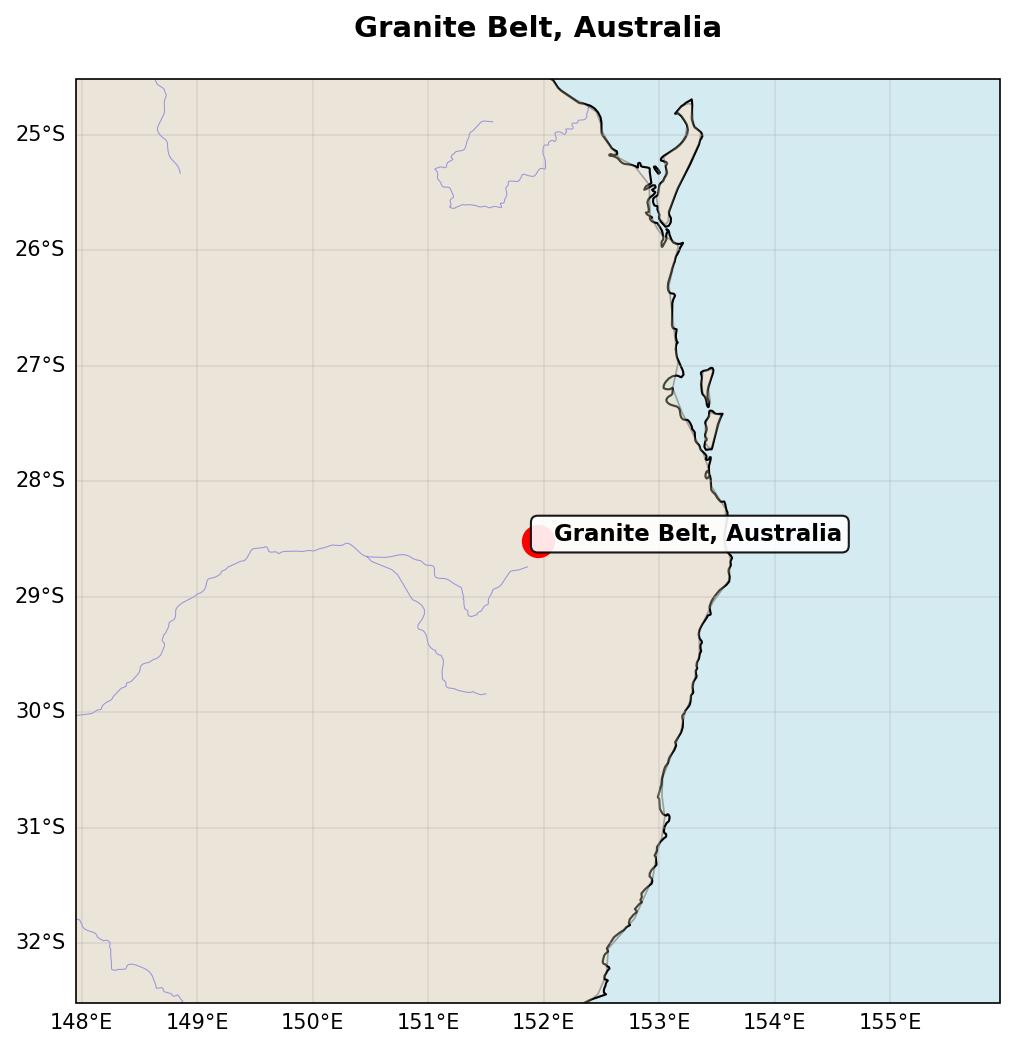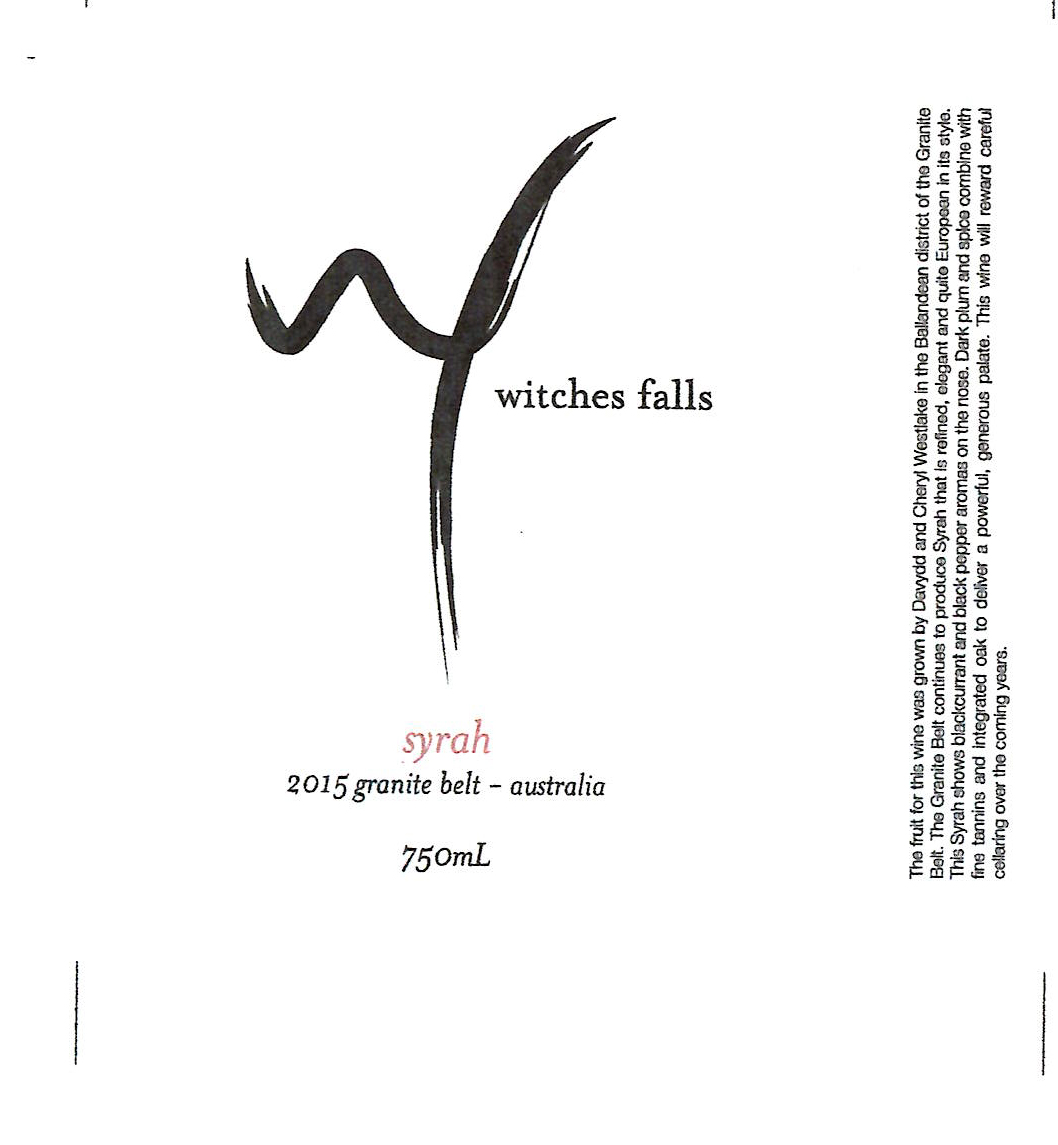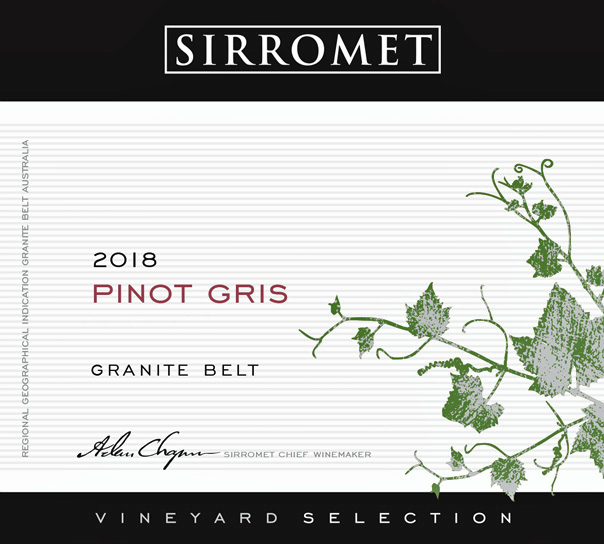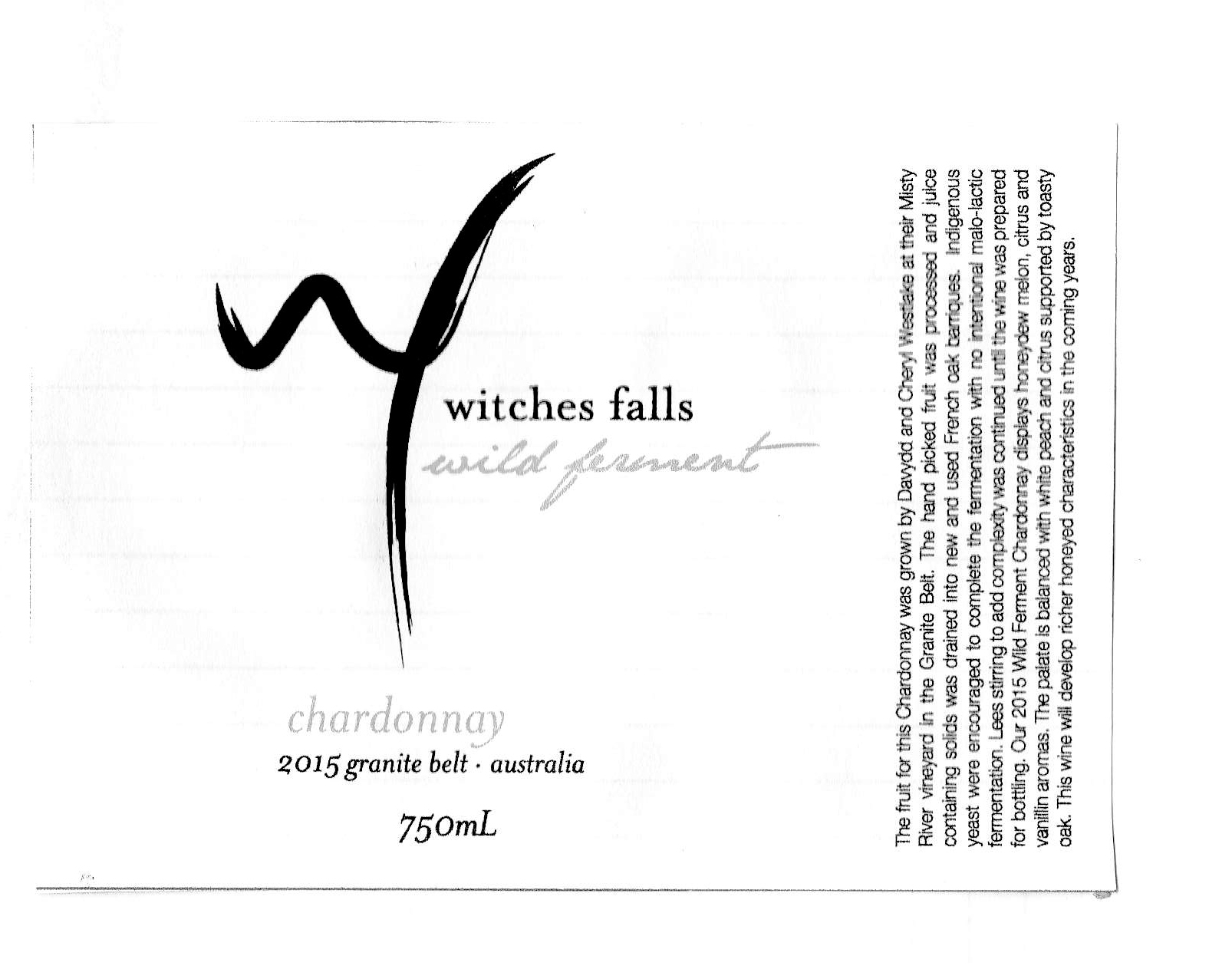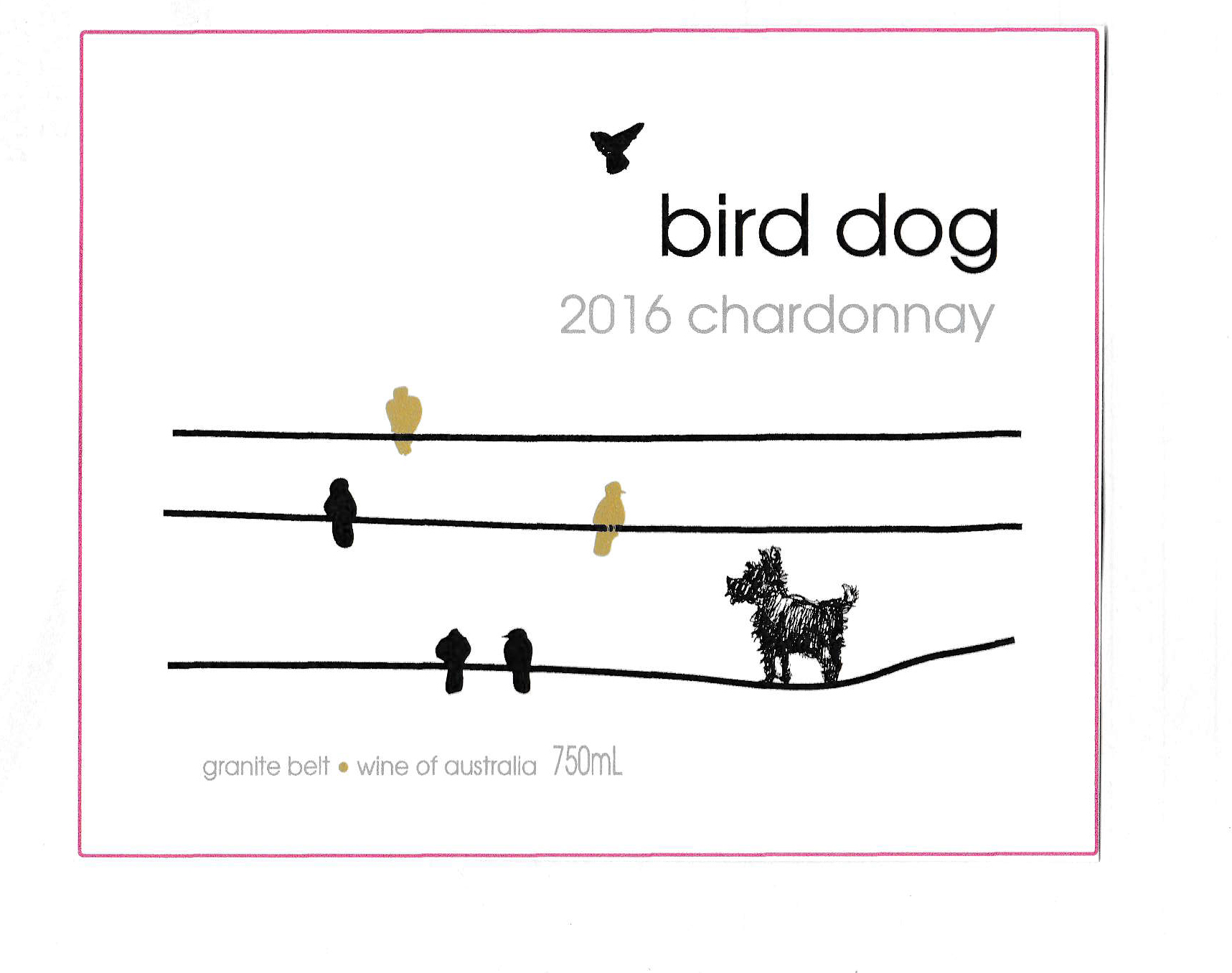Terroir of the Granite Belt
The Granite Belt's vineyards, situated at elevations between 700 and 1,200 meters, enjoy a cool, subtropical climate. This high altitude creates a stark contrast between warm summer days and cool nights, perfect for preserving grape acidity and ensuring slow, even ripening. Such conditions are key to producing wines with natural acidity and refined structure.
Annually, the region receives about 700 to 800 mm of rain, mostly during the growing season, often in the form of thunderstorms. Despite this rainfall, drip irrigation is common to maintain vine health. The soils, mainly weathered granite sands and gravels, are well-drained, promoting deep roots and flavorful grapes. These factors, along with the region's granitic landscape, yield wines with bright acidity and distinct varietal character, from Shiraz to unique varieties like Sangiovese.
Notable Wineries in the Granite Belt
The Granite Belt, with its unique blend of high altitude and granite-rich soils, is home to numerous standout wineries, each offering a distinctive taste of this remarkable region. Here are a few notable names:
-
Ballandean Estate: Established in 1912, this winery is celebrated for its bold Shiraz and traditional red blends that capture the essence of the region.
-
Symphony Hill: Located in Stanthorpe, it shines with Merlot-based reds, elegant Cabernet blends, and sparkling wines crafted in the traditional method.
-
Jester Hill: Known for its diverse range, including dry Riesling and Nebbiolo, offering an exciting palette for wine enthusiasts.
-
Queensland College of Wine Tourism: Situated in Stanthorpe, this institution underscores the Granite Belt's commitment to producing quality wines.
Sustainable Winemaking in the Granite Belt
The Granite Belt, a unique wine region in south-east Queensland, is renowned for its sustainable practices that harmonize with its cool climate and granitic soils. Benefiting from summer rains, many vineyards rely on natural precipitation, supplemented by efficient drip irrigation when necessary. Groundcover and mulch are common, helping to retain soil moisture and prevent erosion.
Growers often employ organic and biodynamic methods, enhancing soil health with composted grape skins and prunings. The region's elevation and airflow naturally reduce disease risk, while native plants bolster biodiversity. Energy efficiency is a priority, with wineries increasingly adopting solar power and recycling wastewater. Lightweight glass and recycled packaging minimize carbon footprints, ensuring the Granite Belt's wines are not only delightful but also environmentally responsible.
Wine Tourism in the Granite Belt
The Granite Belt offers a rich tapestry of wine tourism experiences, rooted in its high-altitude vineyards and distinctive granite soils. Visitors can explore over 40 wineries along scenic cellar-door trails, where tastings are often accompanied by farm-fresh meals.
The region's natural beauty is showcased in Girraween National Park, offering opportunities for bushwalking and vineyard picnics. Festivals like the Stanthorpe Apple & Grape Harvest Festival celebrate local produce and wine with vibrant parades and markets.
The Granite Belt's cooler climate makes it a popular destination, especially with its blend of craft breweries, cider houses, and gourmet dining. Many wineries provide on-site accommodations, enhancing the wine tourism experience with the region's commitment to sustainability and quality. This makes the Granite Belt a premier spot for those looking to immerse themselves in Queensland's wine culture.
